Serge Cajfinger swaps Paris for a Bahia beach house by Marcio Kogan
Brazilian architect Marcio Kogan designs a dream house out of concrete blocks and a eucalyptus-stick pergola for Paule Ka founder Serge Cajfinger
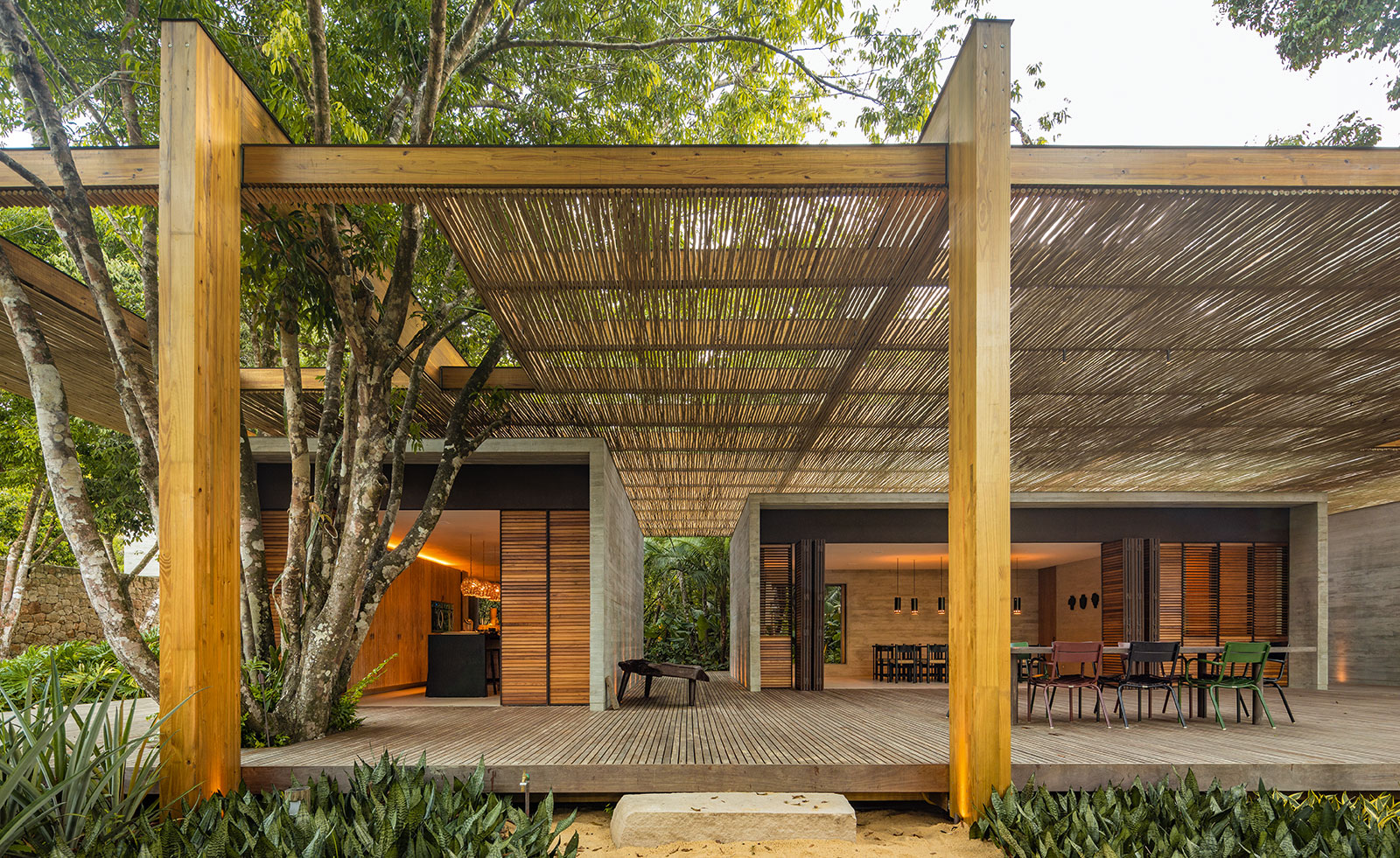
A decade ago, the Frenchman Serge Cajfinger spotted Marcio Kogan’s Paraty House in an issue of Wallpaper* (W*131). He was so smitten, he told another magazine (it’s allowed) that he dreamed of having his own house built by the Brazilian architect some day. By chance, Kogan saw this article, and wondered, ‘Who is this guy?’
Cajfinger, 64, founded fashion brand Paule Ka in 1988. By the time he sold a majority stake, in 2011, the company had annual sales of around €40m. Cajfinger had spent the first years of his life in Brazil and now he wanted to retire there full time, to build a casa na areia – a ‘house on the sand’. When he finally contacted Kogan, in 2015, the architect’s first response was, ‘I’ve been waiting for you.’
Kogan advised him to buy a plot near Trancoso, a low-key, beautifully preserved seaside town in Bahia province, home to a mix of locals and international jet-setters. There was very little beachfront land for sale, but Cajfinger got lucky and learned that a friend of a friend was selling a 6,427 sq m plot by the sea. He sold his Quai Voltaire apartment in Paris and bought it.
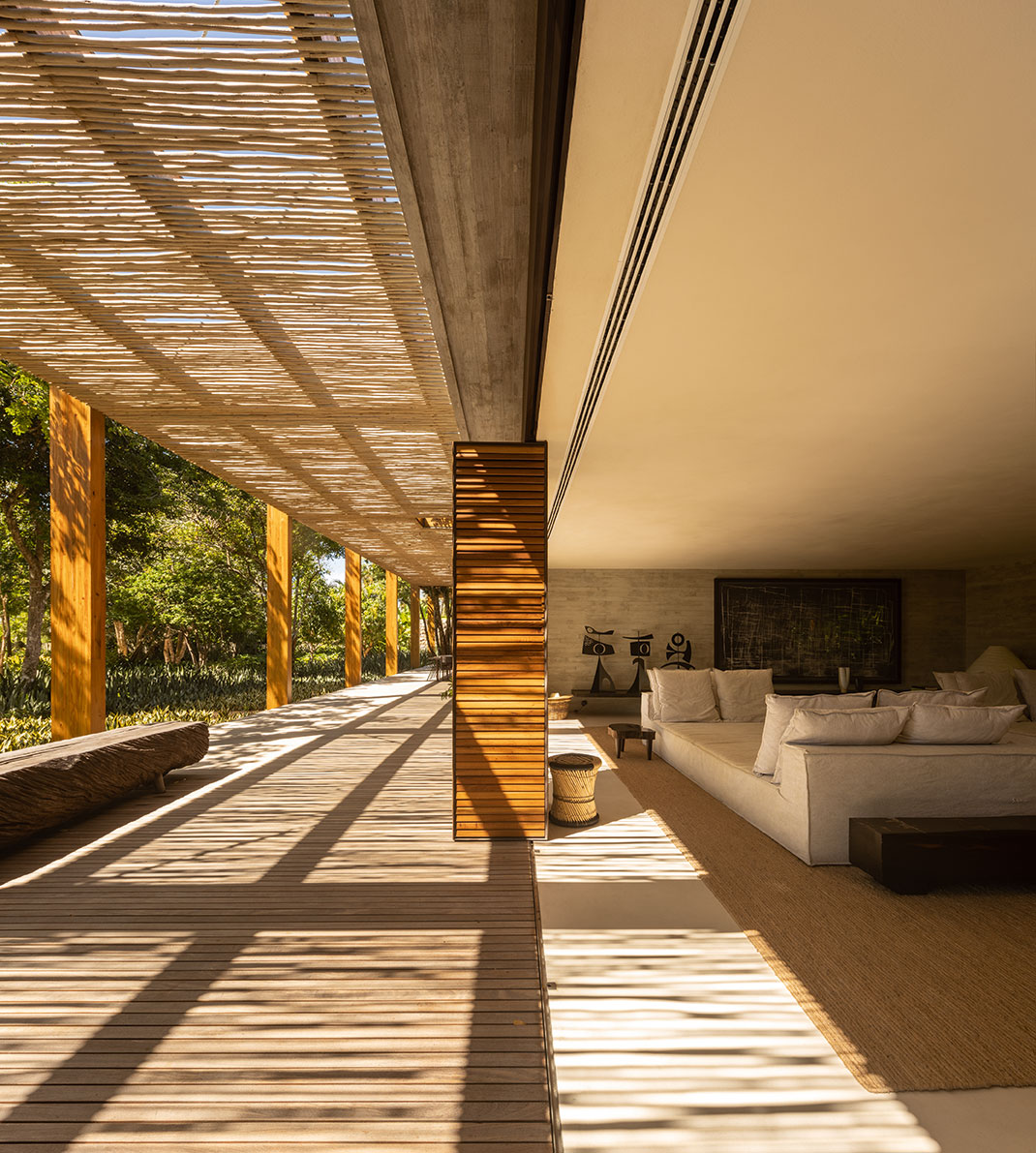
The pergola’s eucalyptus sticks cast changing shadows, while wooden shutters allow the interiors to be fully open. In the living area are a ‘C11’ soaf, by Marcus Ferreira for Carbono, and (against wall) a series of sculptures by Philippe Hiquilly
He and Kogan are a perfect pair, sharing the same passion for 1950s and 1960s modernism. The architects of Studio MK27, Kogan’s firm, work in close collaboration with clients on every project. And in this spirit, the team, led by architects Marcio Tanaka and Beatriz Meyer, extended to include Cajfinger, who considers himself a frustrated architect. ‘I was very directive,’ he says. ‘I knew what I wanted and didn’t want.’
Kogan adds, ‘He’s a very sophisticated guy. A dream client. He’s probably more perfectionist than we are – that’s very difficult.’
The architects distributed the living areas throughout five separate concrete blocks, a reference to the small cottages around Bahia. For a seamless connection between indoors and out, the boxes are grouped beneath a porous structure, a pergola made of eucalyptus sticks on a glue-laminated timber frame. ‘If it’s raining,’ says Kogan, ‘you take your umbrella to go to another part of the house.’
The house is raised 40cm off the ground, to enhance ventilation and the view while keeping snakes and lizards out. Folding wooden shutters control light, air flow and privacy. A permanent breeze provides natural ventilation, while collected rainwater is used to irrigate the garden. By law, the house had to be built at least 60m from the water and 10m from the road. It is long and narrow, so that all the rooms except the bathrooms face the sea. The actual living area occupies 328 sq m (including four guest bedrooms), while the pergola expands the surface area to 881 sq m.
RELATED STORY
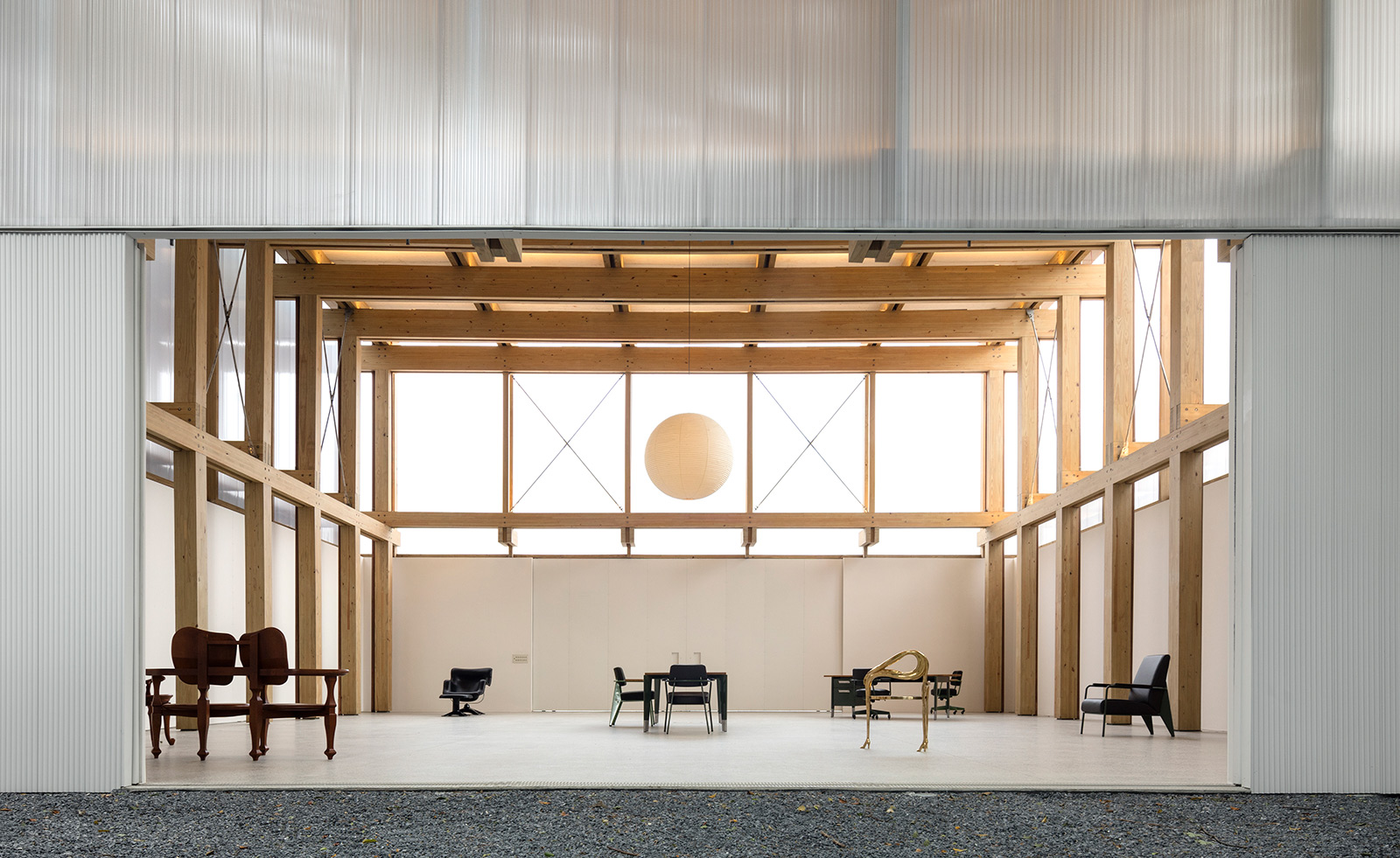
Kogan, an erstwhile movie director, always brings his cinematic approach to architecture, with houses that tend to be horizontal – or as he says, ‘widescreen’. In this case, it is ‘very wide’. The pergola also adds drama, filtering the sunlight and casting shadows in graphic lines that change throughout the day.
Cajfinger showed up in Brazil with an exceptional collection of French art and mid-20th-century objects, including Charlotte Perriand chairs in wood and straw, Isamu Noguchi paper lamps, biomorphic steel sculptures by French artist Philippe Hiquily, and a Roger Capron dining table covered with ceramic tiles in a sea-god theme. Studio MK27 interior architect Diana Radomysler says that Cajfinger’s collection drove the design, and made her job very easy. Local artisans added touches such as headboards and benches crafted of solid brauna wood.
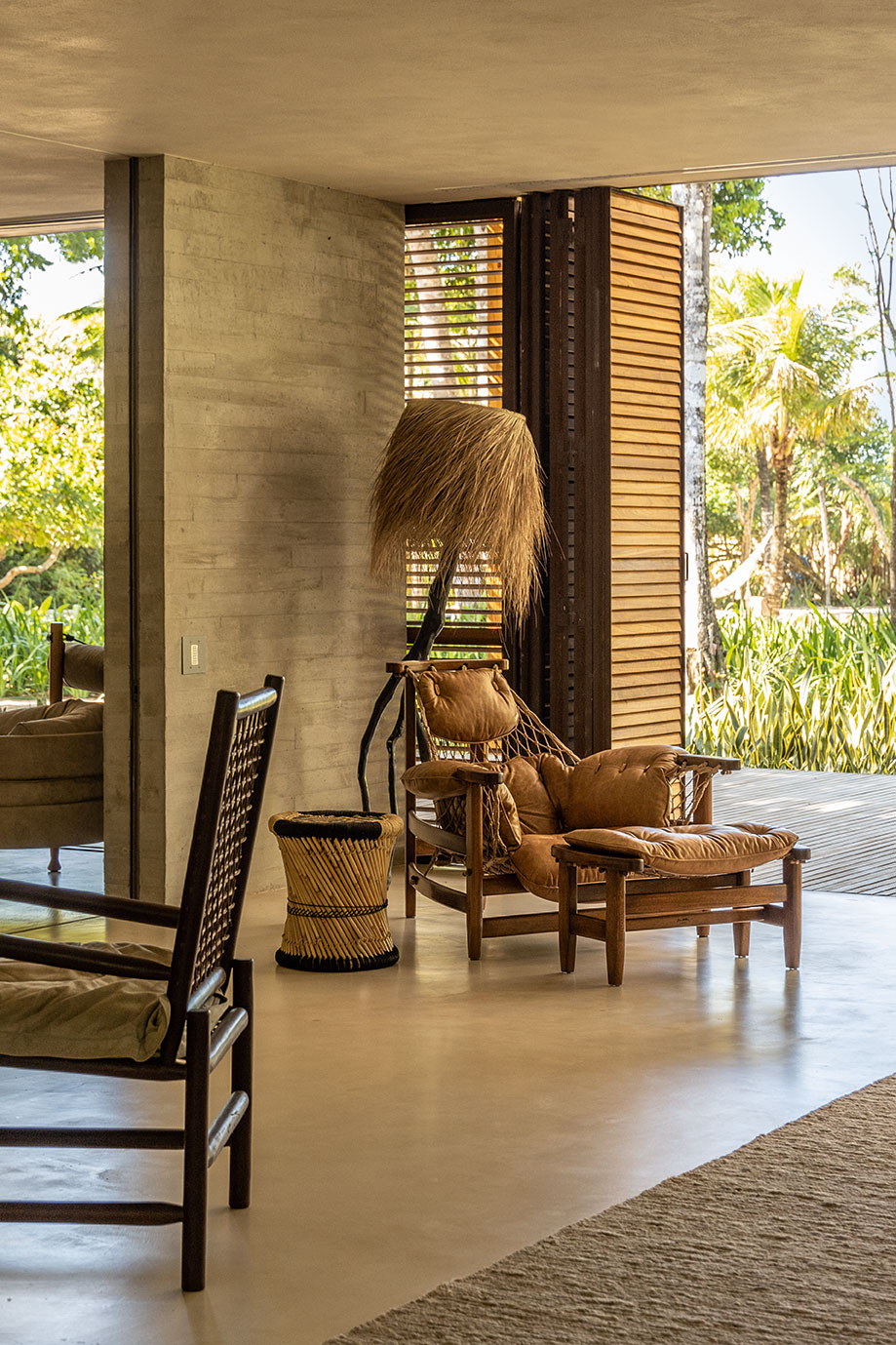
A floor lamp by Rock the Kasbah stands over a ‘Jangada’ chair and ottoman by Jean Gillon
The garden is another work of art, designed by Isabel Duprat, a disciple of the renowned Brazilian landscape architect Roberto Burle Marx. It is lush and tropical, with palm trees, pineapple plants, and winding sandy paths leading to the ocean. Duprat did not remove a single tree – in fact, 100 more were planted, and some seem to burst through the pergola roof. The garden’s organic curves extend to the swimming pool, and contrast with the rigorous geometry of the house. The effect reminds Cajfinger of glamorous images from the 1950s by photographer Slim Aarons.
The man who made his fortune designing clothing now spends his days barefoot and in shorts. He has never been happier. ‘It is rare to realise one’s dreams,’ Cajfinger says. ‘This is the house of my dreams.’

A Philippe Hiquily sculpture in an open corridor between the concrete volumes. Trees are allowed to burst up through the raised floor and the pergola roof
INFORMATION
A version of this article originally featured in the September 2019 issue of Wallpaper* (W*246)
Receive our daily digest of inspiration, escapism and design stories from around the world direct to your inbox.
Amy Serafin, Wallpaper’s Paris editor, has 20 years of experience as a journalist and editor in print, online, television, and radio. She is editor in chief of Impact Journalism Day, and Solutions & Co, and former editor in chief of Where Paris. She has covered culture and the arts for The New York Times and National Public Radio, business and technology for Fortune and SmartPlanet, art, architecture and design for Wallpaper*, food and fashion for the Associated Press, and has also written about humanitarian issues for international organisations.
-
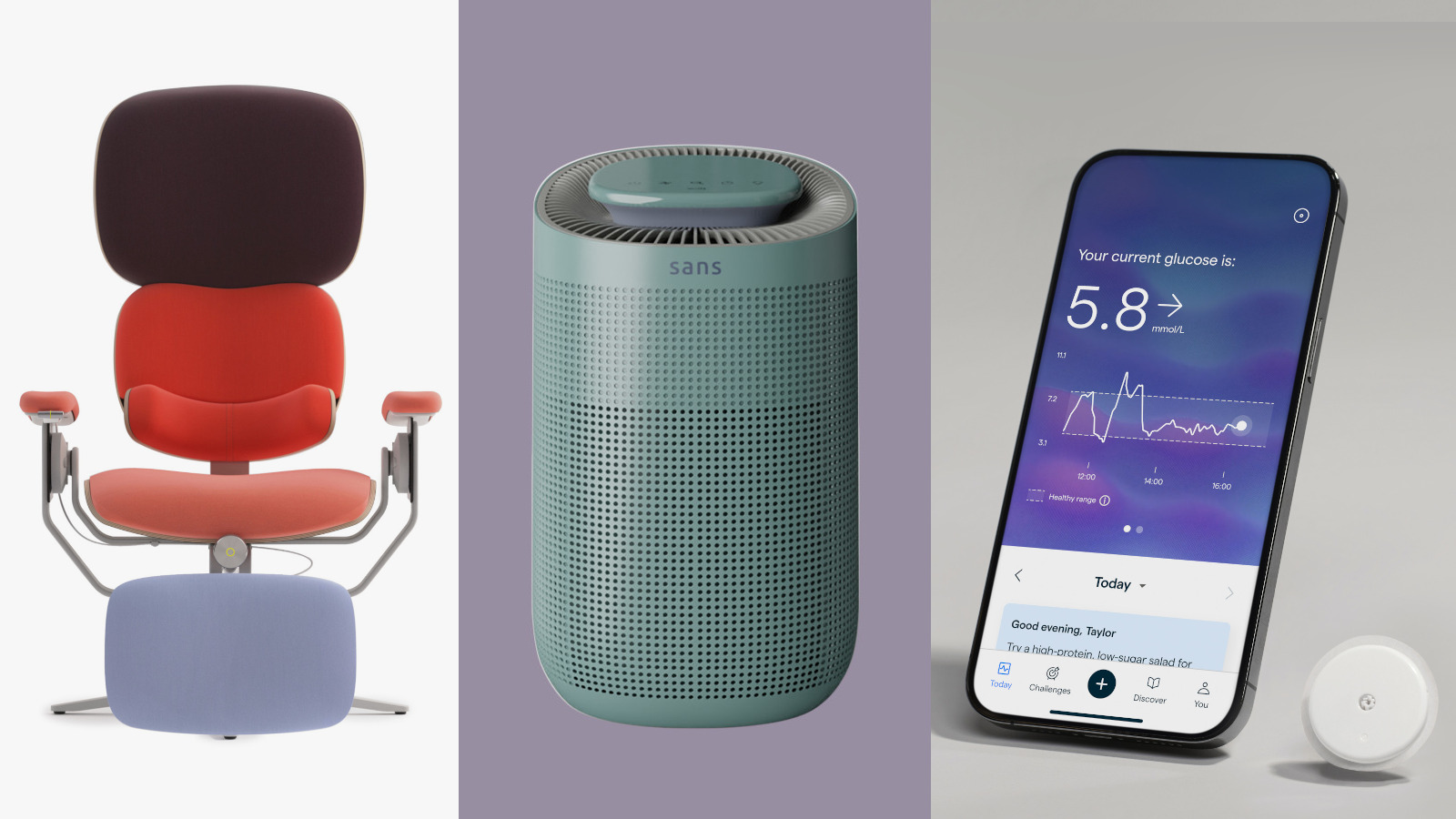 New tech dedicated to home health, personal wellness and mapping your metrics
New tech dedicated to home health, personal wellness and mapping your metricsWe round up the latest offerings in the smart health scene, from trackers for every conceivable metric from sugar to sleep, through to therapeutic furniture and ultra intelligent toothbrushes
-
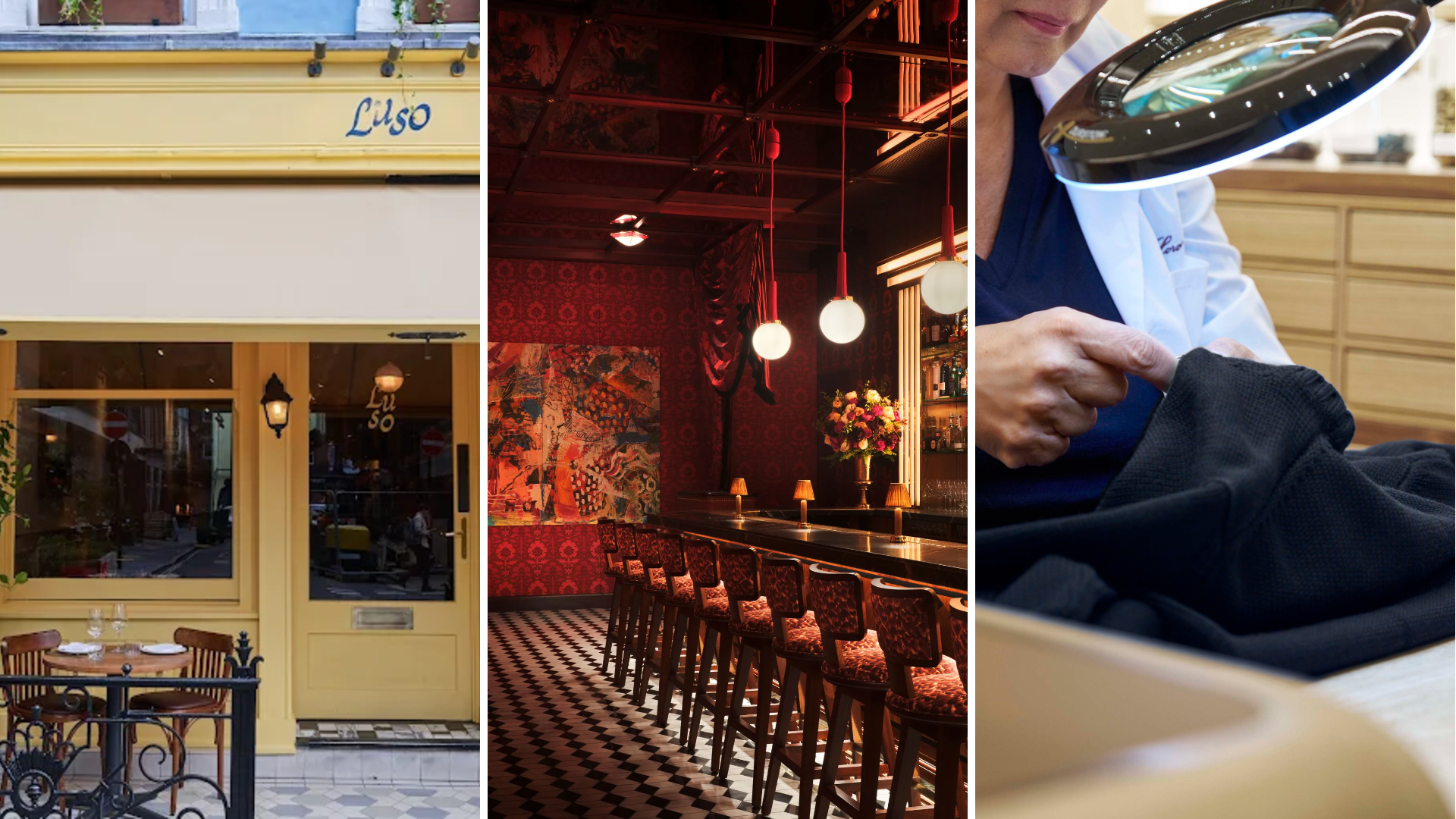 Out of office: The Wallpaper* editors’ picks of the week
Out of office: The Wallpaper* editors’ picks of the week'Tis the season for eating and drinking, and the Wallpaper* team embraced it wholeheartedly this week. Elsewhere: the best spot in Milan for clothing repairs and outdoor swimming in December
-
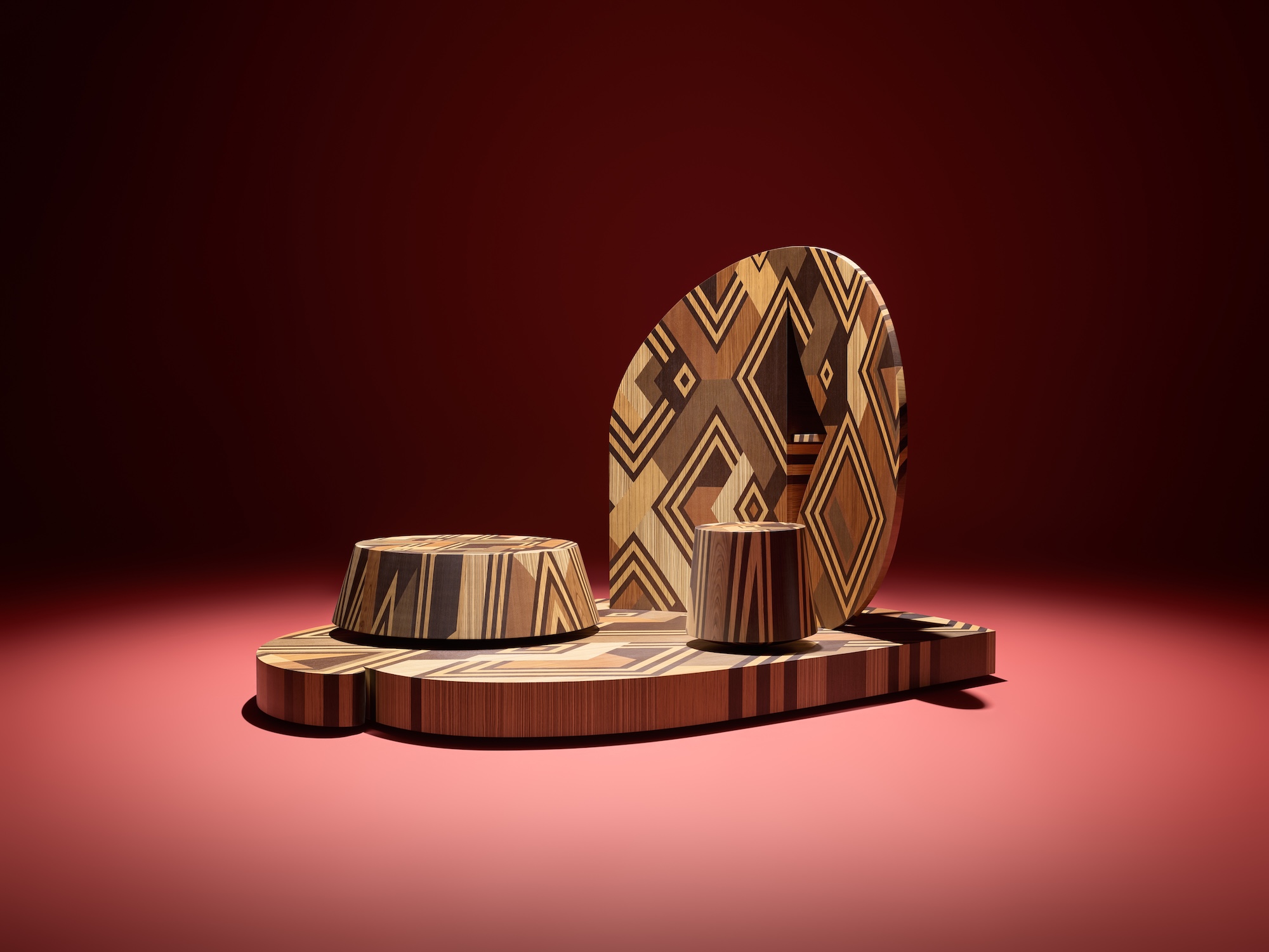 How Stephen Burks Man Made is bringing the story of a centuries-old African textile to an entirely new audience
How Stephen Burks Man Made is bringing the story of a centuries-old African textile to an entirely new audienceAfter researching the time-honoured craft of Kuba cloth, designers Stephen Burks and Malika Leiper have teamed up with Italian company Alpi on a dynamic new product
-
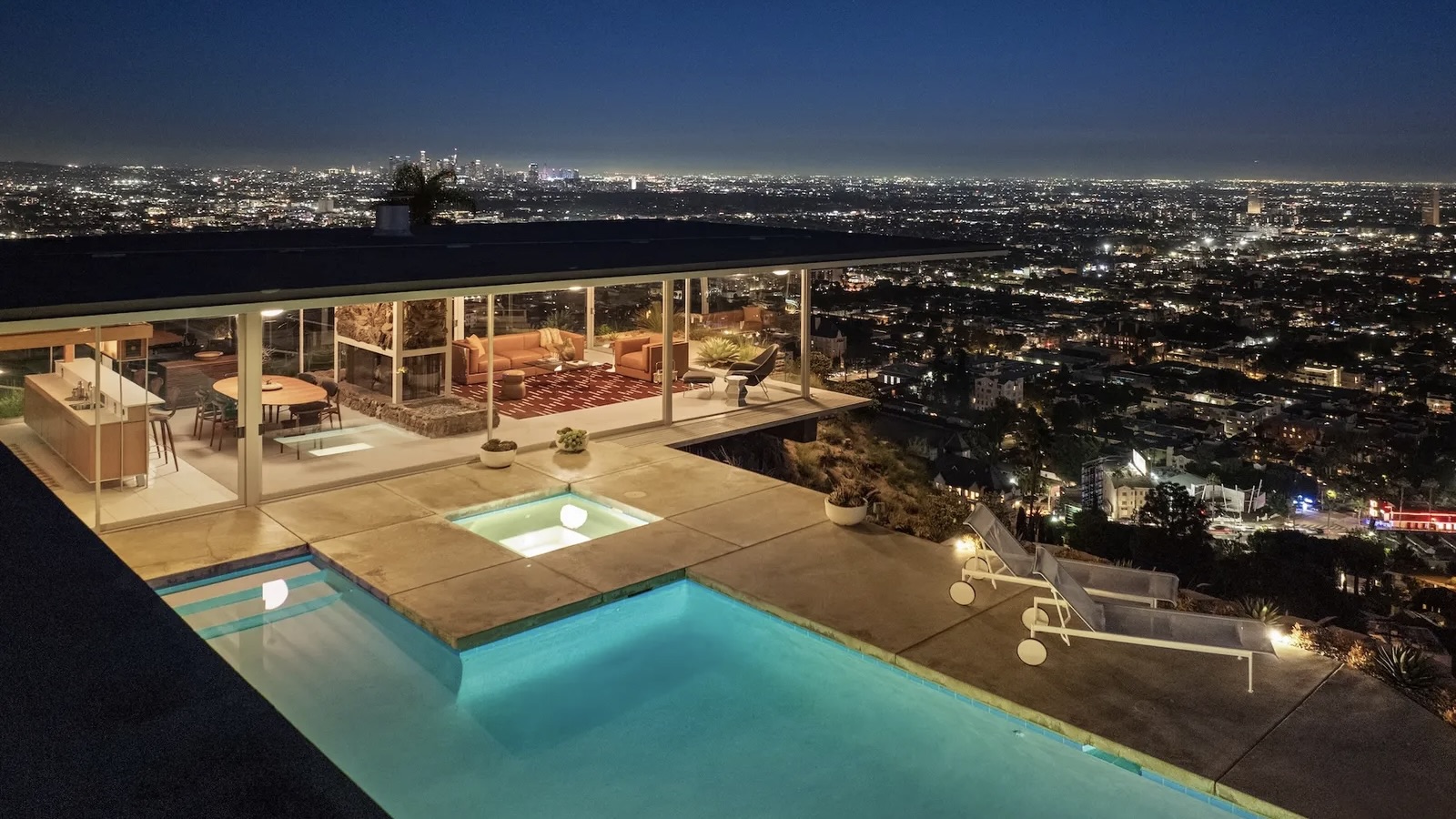 The Architecture Edit: Wallpaper’s houses of the month
The Architecture Edit: Wallpaper’s houses of the monthFrom wineries-turned-music studios to fire-resistant holiday homes, these are the properties that have most impressed the Wallpaper* editors this month
-
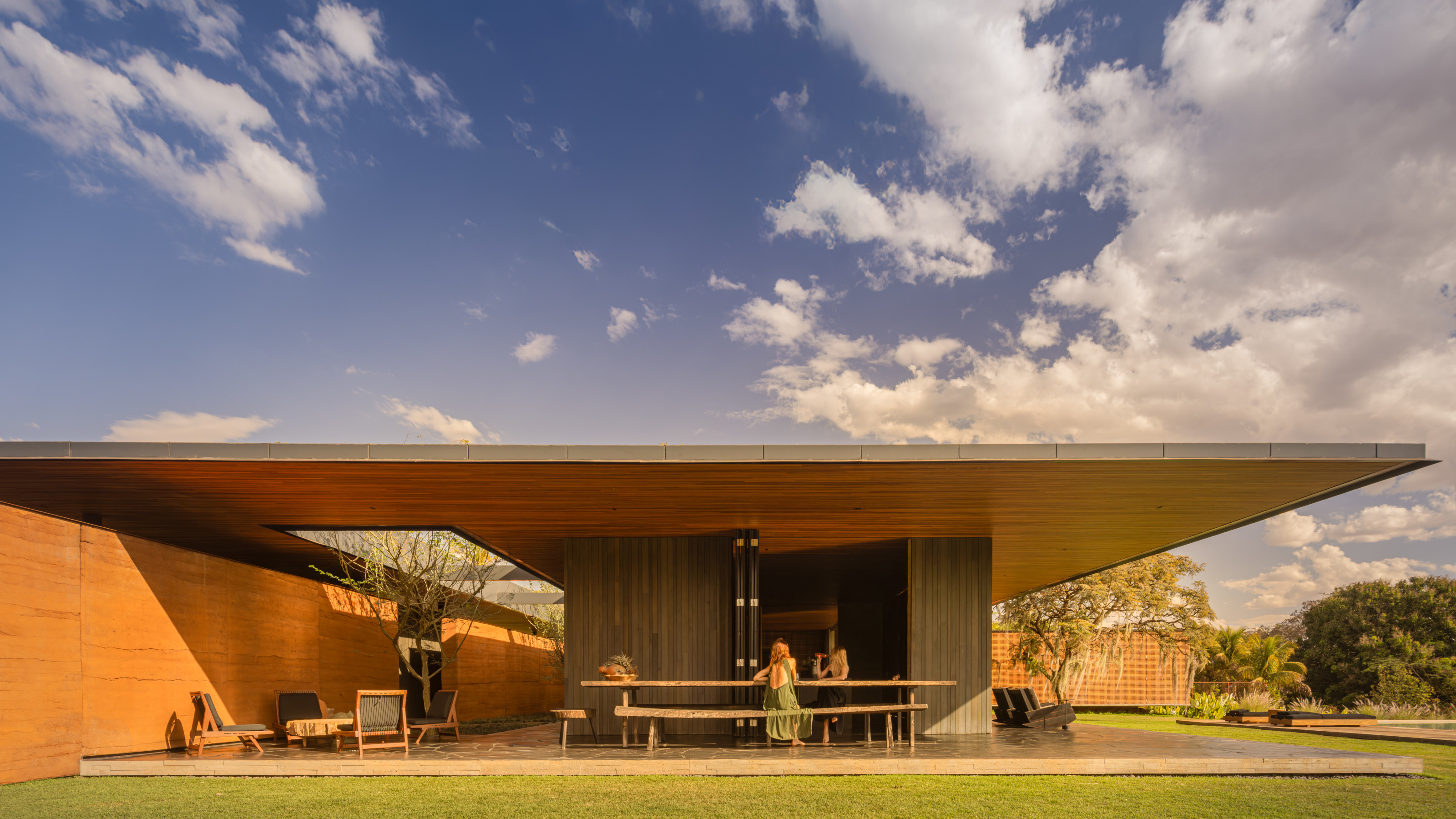 A spectacular new Brazilian house in Triângulo Mineiro revels in the luxury of space
A spectacular new Brazilian house in Triângulo Mineiro revels in the luxury of spaceCasa Muxarabi takes its name from the lattice walls that create ever-changing patterns of light across its generously scaled interiors
-
 An exclusive look at Francis Kéré’s new library in Rio de Janeiro, the architect’s first project in South America
An exclusive look at Francis Kéré’s new library in Rio de Janeiro, the architect’s first project in South AmericaBiblioteca dos Saberes (The House of Wisdom) by Kéré Architecture is inspired by the 'tree of knowledge', and acts as a meeting point for different communities
-
 A Brasília apartment harnesses the power of optical illusion
A Brasília apartment harnesses the power of optical illusionCoDa Arquitetura’s Moiré apartment in the Brazilian capital uses smart materials to create visual contrast and an artful welcome
-
 This modernist home, designed by a disciple of Le Corbusier, is on the market
This modernist home, designed by a disciple of Le Corbusier, is on the marketAndré Wogenscky was a long-time collaborator and chief assistant of Le Corbusier; he built this home, a case study for post-war modernism, in 1957
-
 Inspired by farmhouses, a Cunha residence unites cosy charm with contemporary Brazilian living
Inspired by farmhouses, a Cunha residence unites cosy charm with contemporary Brazilian livingWhen designing this home in Cunha, upstate São Paulo, architect Roberto Brotero wanted the structure to become 'part of the mountains, without disappearing into them'
-
 Louis Kahn, the modernist architect and the man behind the myth
Louis Kahn, the modernist architect and the man behind the mythWe chart the life and work of Louis Kahn, one of the 20th century’s most prominent modernists and a revered professional; yet his personal life meant he was also an architectural enigma
-
 Arts institution Pivô breathes new life into neglected Lina Bo Bardi building in Bahia
Arts institution Pivô breathes new life into neglected Lina Bo Bardi building in BahiaNon-profit cultural institution Pivô is reactivating a Lina Bo Bardi landmark in Salvador da Bahia in a bid to foster artistic dialogue and community engagement